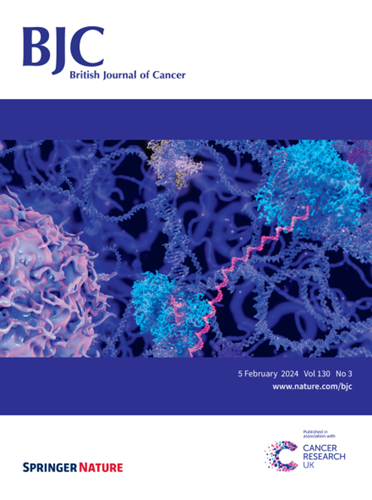Targeting PTGDS Promotes ferroptosis in peripheral T cell lymphoma through regulating HMOX1-mediated iron metabolism
IF 6.4
1区 医学
Q1 ONCOLOGY
引用次数: 0
Abstract
Peripheral T cell lymphoma (PTCL) is characterized by high heterogeneity, strong aggressiveness, and extremely poor prognosis. Ferroptosis, a novel form of programmed cell death, has been involved in tumor development and targeting ferroptosis holds great potential for tumor therapy. Lentiviral transfection was performed to regulate gene expression, followed by Tandem mass tag (TMT)-mass spectrometry and RNA-sequencing. Tumor xenograft models were established for in vivo experiments. High expression of prostaglandin D2 synthase (PTGDS) was closely associated with poor prognosis of PTCL patients. PTGDS knockdown and AT56 treatment significantly inhibited the progression of PTCL through regulating cell viability, proliferation, apoptosis, cell cycle and invasion in vitro and in vivo. We further revealed that targeting PTGDS promoted ferroptosis process and enhanced the sensitivity of PTCL cells to ferroptosis inducers Sorafenib in vitro and in vivo. Mechanically, PTGDS interacted with heme-degrading enzymes HMOX1, and targeting PTGDS increased the level of iron and induced ferroptosis in PTCL through promoting HMOX1-mediated heme catabolism and ferritin autophagy process. Through the construction of H25A mutation, the specific gene site of HMOX1 corresponding to its role was identified. Taken together, our findings firstly identified that targeting PTGDS promotes the ferroptosis in PTCL through regulating HMOX1-mediated iron metabolism, and highlighted novel therapeutic strategies to improve the efficacy of ferroptosis-targeted therapy in PTCL patients.

靶向PTGDS通过调节hmox1介导的铁代谢促进外周T细胞淋巴瘤铁下垂。
背景:外周T细胞淋巴瘤(PTCL)具有异质性高、侵袭性强、预后极差的特点。铁下垂是一种新的程序性细胞死亡形式,参与肿瘤的发展,靶向铁下垂在肿瘤治疗中具有很大的潜力。方法:采用慢病毒转染调控基因表达,采用串联质谱法(TMT)和rna测序。建立肿瘤异种移植模型进行体内实验。结果:前列腺素D2合成酶(PTGDS)高表达与PTCL患者预后不良密切相关。PTGDS敲除和AT56处理通过调节细胞活力、增殖、凋亡、细胞周期和侵袭,在体外和体内显著抑制PTCL的进展。我们进一步在体外和体内发现,靶向PTGDS可促进铁下垂过程,并增强PTCL细胞对铁下垂诱导剂索拉非尼的敏感性。机械上,PTGDS与血红素降解酶HMOX1相互作用,靶向PTGDS通过促进HMOX1介导的血红素分解代谢和铁蛋白自噬过程,增加PTCL中的铁水平,诱导铁凋亡。通过构建H25A突变,确定了HMOX1与其作用对应的特定基因位点。综上所述,我们的研究结果首次发现靶向PTGDS通过调节hmox1介导的铁代谢促进PTCL中的铁下沉,并为提高PTCL患者铁下沉靶向治疗的疗效提供了新的治疗策略。
本文章由计算机程序翻译,如有差异,请以英文原文为准。
求助全文
约1分钟内获得全文
求助全文
来源期刊

British Journal of Cancer
医学-肿瘤学
CiteScore
15.10
自引率
1.10%
发文量
383
审稿时长
6 months
期刊介绍:
The British Journal of Cancer is one of the most-cited general cancer journals, publishing significant advances in translational and clinical cancer research.It also publishes high-quality reviews and thought-provoking comment on all aspects of cancer prevention,diagnosis and treatment.
 求助内容:
求助内容: 应助结果提醒方式:
应助结果提醒方式:


